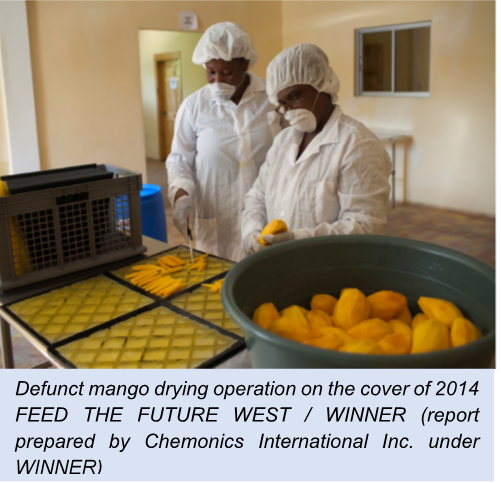Based on market analyses, USAID/IDB/Coca Cola funded Haiti Hope project decided not to invest in processing enterprises. A good example of the problems that afflicted those processing enterprises that other projects invested in comes from Mirebalais, Haiti. With support from USAID/WINNER’s $127 million Feed the Future West project, the Mirebalais association ADAIM (Association pour le développement agro-industriel de Mirebalais) established l’Unité de Séchage de Fruits à Mirebalais.
At the cost of US$300,000 the operation was inaugurated with great fanfare on the 16 November 2012. The Minister of Commerce attended as did USAID directors and Chemonics head of the USAID/WINNER project, Jean Robert Estime.
Hopes ran high. The project was going to produce 18,000 pounds of dried mango per year (MCI 2012; USAID 2012). According to a project insider, problems that doomed the business before it ever started included,
- A stove instead of an industrial drier
- High cost of electricity
- Lack of business knowledge among association that ran the business
- Employers who expected USAID/WINNER– not business profits– to pay them
ADAIM dried some mangos. But the product never moved. It stayed in the cooler. And the fact that, according to the insider, they also had no effective means to control the quality of the producer or to determine when the sliced mangos were actually dry, meant that it was not good anyway. When USAID inspectors came to have a look they told ADAIM to burn their stock. The business subsequently shut the plant down. That was some two years before the picture on the upper right of this text box was published in the first page of a report heralding USAID/WINNER’s successes.








